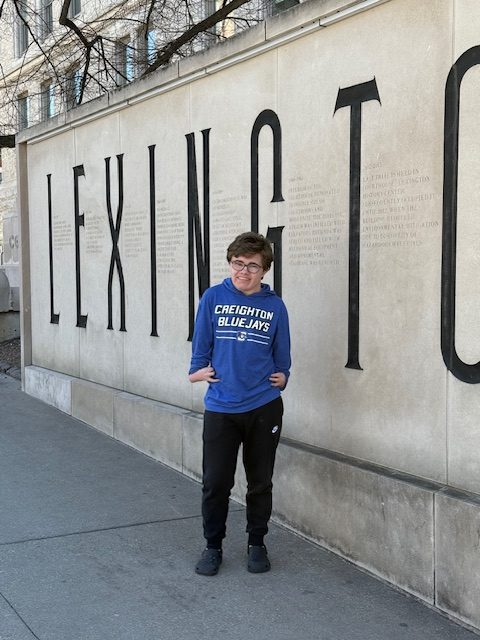In 1983, Oregon parents Lynn and David Frohnmayer learned their two daughters, Kirsten and Katie, had Fanconi anemia (FA), a rare genetic disorder that leads to bone marrow failure, leukemia, and cancer. They would later find out that their third daughter, Amy, also had the disease. The Frohnmayers learned that patients with FA rarely live to adulthood and that there is no cure for this illness.
Below are excerpts from Lynn Frohnmayer’s address at the 2018 Scientific Symposium. You can watch the entire address by scrolling to the bottom of this page.
“In the early 1980s, things were going extremely well in our family…we had these fantastic kids who were super smart, beautiful, kind, good kids. I remember going to the beach in Oregon, looking at this gorgeous family of mine and thinking ‘I have got to be about the luckiest person I know.’ Well, we all know that was not to last.
Over the course of the 1980s, we were to learn that of our five children, all three of our daughters had Fanconi anemia. We were told it was a fatal disease, that kids usually died in the first decade of life, and very few ever lived until adulthood. Therapies then were practically nonexistent. I just do not have the words to tell you the extent of the anguish that we felt.
One of the harsh realities of life is that we’re not always in control of all the things that matter to us the very most of all. We all do the best we can with what comes our way, and sometimes we’re fortunate to see that progress, and even great good, can come out of our own misfortune. I think that’s happened in my life, for sure.”
In 1989, the Frohnmayers founded the Fanconi Anemia Research Fund (FARF). Thirty years later, all three Frohnmayer daughters have passed away from complications of Fanconi anemia. At the 30th Scientific Symposium in late 2018, Lynn Frohnmayer addressed the audience, speaking about her family’s story and the progress made in three decades of FA research.
Gene discovery
“One of our first projects was to discover the FA gene. Well, as we all know, there is not one, but there are 22 FA genes. We discovered five of our 22 genes were breast cancer susceptibility genes. This put us on the map. We know that these genes function in the FA/BRCA pathway, and that their main job is to protect and repair the genome. But the proteins of these genes have functions independent of DNA repair. Some are involved in controlling oxidative stress, some in protecting against endogenous aldehydes, protecting against inflammation, and enhancing stem cell survival.”
Bone marrow transplant
“We’ve come very, very far in this area. In 1986, our daughter Katie needed a bone marrow transplant, [but at that time] you had to have a matched sibling donor [and she did not] … When Kirsten really needed a transplant in 1995, centers were willing to do it but they had only a 20% chance of survival…because they couldn’t engraft. In 1999, Dr. John Wagner wanted to do a trial to see if one drug, fludarabine, made a difference. That was one of those game-changing events. Overnight, practically, we went from 20% success rate, to 60%. Today in the United States at the three major FA transplant centers, success rates for unrelated donor transplants are anywhere between 88% and 94%. We started out at 0% because no one was doing unrelated transplants, and today, most get through. As a result of all this, we are seeing a huge improvement in survival.”
Cancer
“I wish we could declare victory and go home at this point, but unfortunately, by virtue of that fact that everyone is living so much longer, the next big problem is cancer. Back in 1989, we were thinking 2% of the population had cancer. When we wrote our clinical care guidelines in 2014, we said that from birth to age 40, about 14% of FA patients would develop an oral squamous cell carcinoma. But when you just look at the adult population (not starting at birth), the numbers become quite alarming.
What is FARF now doing to try to get ahead of this huge challenge? We now have two full-time scientists to work on this problem of cancer. We’re committed to holding small workshops just like we did with gene therapy. We’re developing an adult cancer registry. We’ve given many grants to various groups looking at various ways to combat this problem of cancer.”
A request to researchers and doctors
“I suspect that every single family member in this room has an overwhelming sense of urgency. They’re all depending on us to push this issue forward, to get answers, to find good drugs and approaches, to prevent and to treat malignancy. I simply make one final request of all of you scientists and doctors: that you share this sense of urgency with our families. It’s really not enough just to find a hopeful compound or to write a gorgeous article and get it published in some prestigious magazine. It’s not going to do any good at all unless we end up putting that compound into an FA patient to see if it’s going to help or not. Not everything we do is going to help, but if we don’t take a few chances and don’t start moving very aggressively to tackle this problem, we’re going to lose a lot more of our fabulous young adults to this ugly disease. So please, join with all of us. Make this a better outcome for these young people that we care so very much about.”




